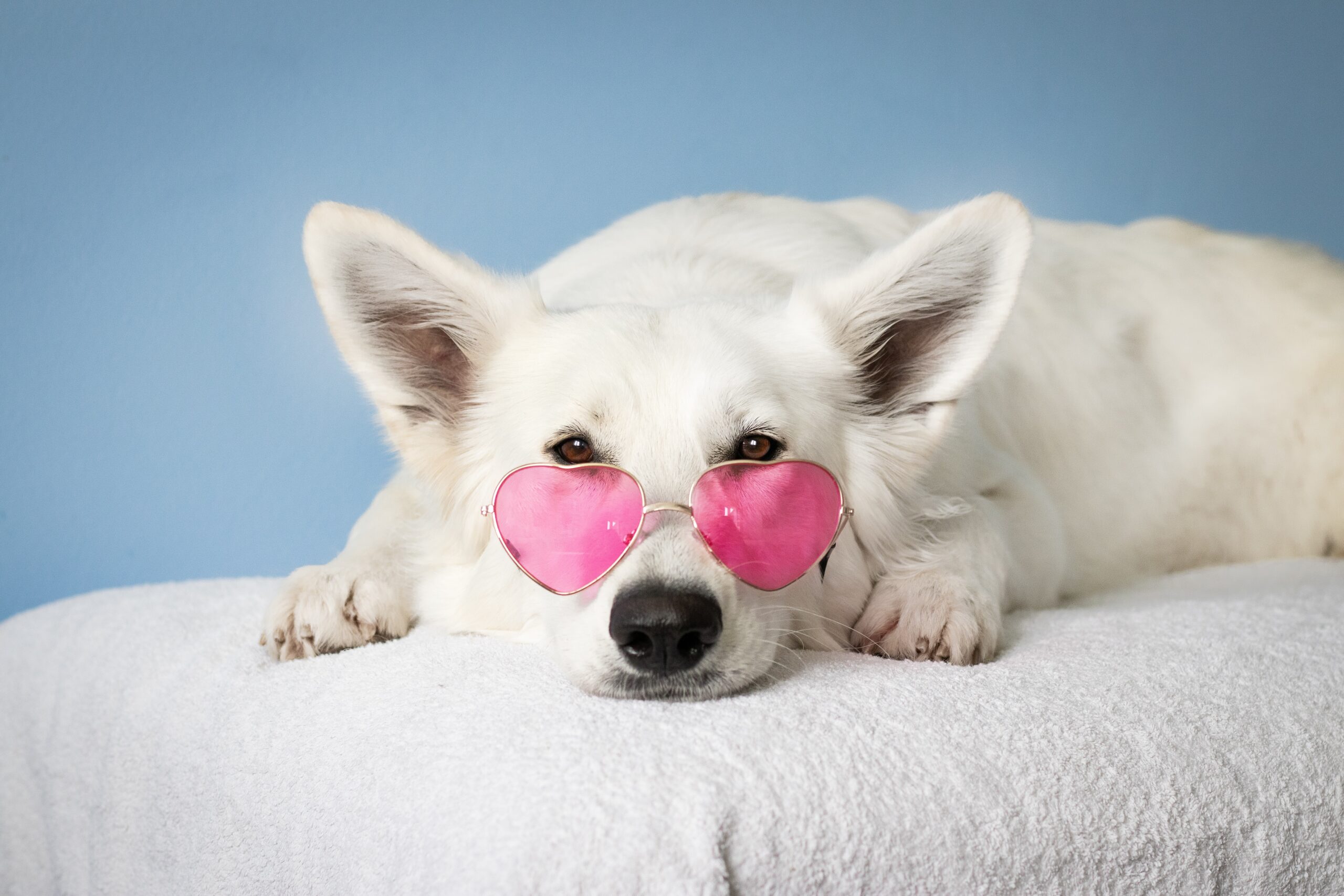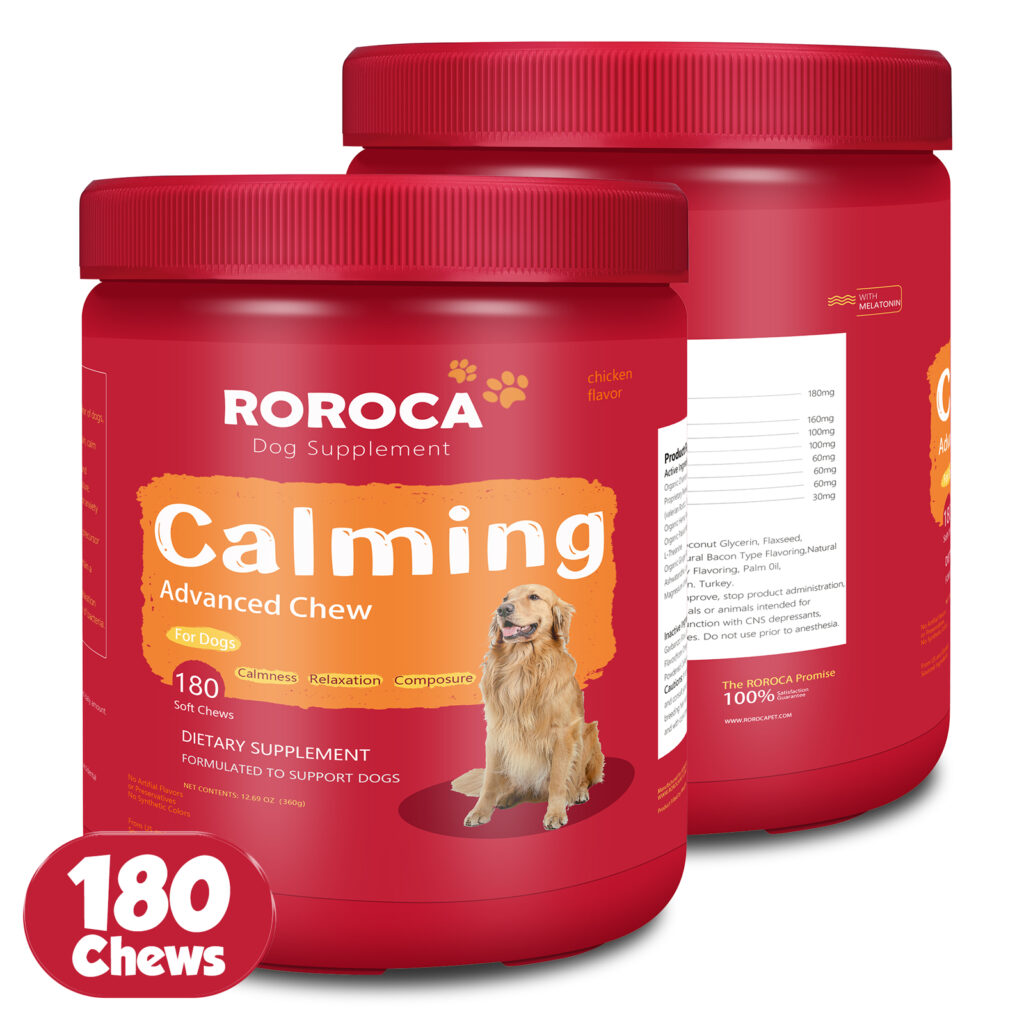Your cart is currently empty!
How to Calm Dogs? What Are Calming Chews for Dogs?
·
Your Guide to Safe, Natural Stress Relief for Anxious Pups
Is your dog pacing during thunderstorms, whining when left alone, or acting aggressively toward visitors? Dog anxiety affects 1 in 4 pets in the U.S., triggering behaviors that strain your bond. While training and routine adjustments help, calming chews for dogs offer a science-backed solution to ease stress safely. This guide covers proven calming methods and explains how high-quality dog calming chews work to restore peace in your home.
Table of Contents
- Why Do Dogs Get Anxious?
- 5 Natural Ways to Calm Your Dog
- What Are Calming Chews for Dogs?
- How to Choose the Best Dog Calming Chews
- Pro Tips for Using Calming Chews Safely
- FAQs

1. Why Do Dogs Get Anxious?
Dogs experience anxiety due to:
- Separation: Fear of being alone (affects 14% of dogs).
- Noise Phobia: Fireworks, thunderstorms, or construction.
- Environmental Changes: Moving homes, new pets, or vet visits.
- Age-Related Decline: Cognitive dysfunction in senior dogs.
Red Flags: Excessive barking, destructive chewing, trembling, or loss of appetite.
2. 5 Natural Ways to Calm Your Dog
① Behavior Training
- Desensitize triggers with gradual exposure (e.g., play firework sounds at low volume).
- Reward calm behavior with treats.
② Pressure Wraps
- Use an anxiety vest for 40% of dogs.
③ Pheromone Therapy
- Plug-in Adaptil diffusers mimic maternal calming pheromones.
④ Exercise & Mental Stimulation
- 30-minute walks reduce cortisol by 27% (University of Bristol study).
⑤ Calming Chews for Dogs
- Fast-acting support: Ideal for unpredictable stressors like travel or vet visits.

3. What Are Calming Chews for Dogs?
Calming chews are soft, chewable supplements formulated with natural ingredients to:
- Lower stress hormones (cortisol).
- Boost serotonin production for relaxation.
- Soothe without sedation (non-drowsy formula).
Key Ingredients to Look For:
- L-Theanine: Reduces agitation (found in green tea).
- Chamomile: Natural sedative properties.
- Valerian Root: Eases nervous system hyperactivity.
- Melatonin: Regulates sleep cycles (for nighttime anxiety).
4. How to Choose the Best Dog Calming Chews
Avoid low-quality products with these red flags:
- ❌ Artificial flavors or preservatives.
- ❌ Undisclosed “proprietary blends.”
- ❌ No third-party testing.
Top 3 Features of Premium Chews:
- Transparent Labeling: Exact doses of each ingredient.
- Vet Endorsements: Recommended by veterinary behaviorists.
- Tailored Formulas: Options for small/large breeds or seniors.
5. Pro Tips for Using Calming Chews Safely
- Start Low: Give 1 chew 90 minutes before stress events (e.g., car rides).
- Daily Use: For chronic anxiety, follow weight-based dosing (e.g., 1 chew/25 lbs).
- Pair with Training: Use chews alongside desensitization for long-term results.
- Consult Your Vet: Confirm safety if your dog takes medications.
Warning: Overdosing may cause lethargy or upset stomach.
6. FAQs About Calming Chews for Dogs
Q: How long do calming chews take to work?
A: Most chews show effects within 30-90 minutes. For sustained results, use daily for 2-4 weeks.
Q: Can puppies use calming chews?
A: Only if labeled for puppies (e.g., 12+ weeks). Avoid melatonin-based chews for young dogs.
Q: Are there side effects?
A: High-quality chews rarely cause issues, but monitor for vomiting or diarrhea.
Q: Can I use chews with CBD oil?
A: Yes, but consult your vet to avoid over-sedation.